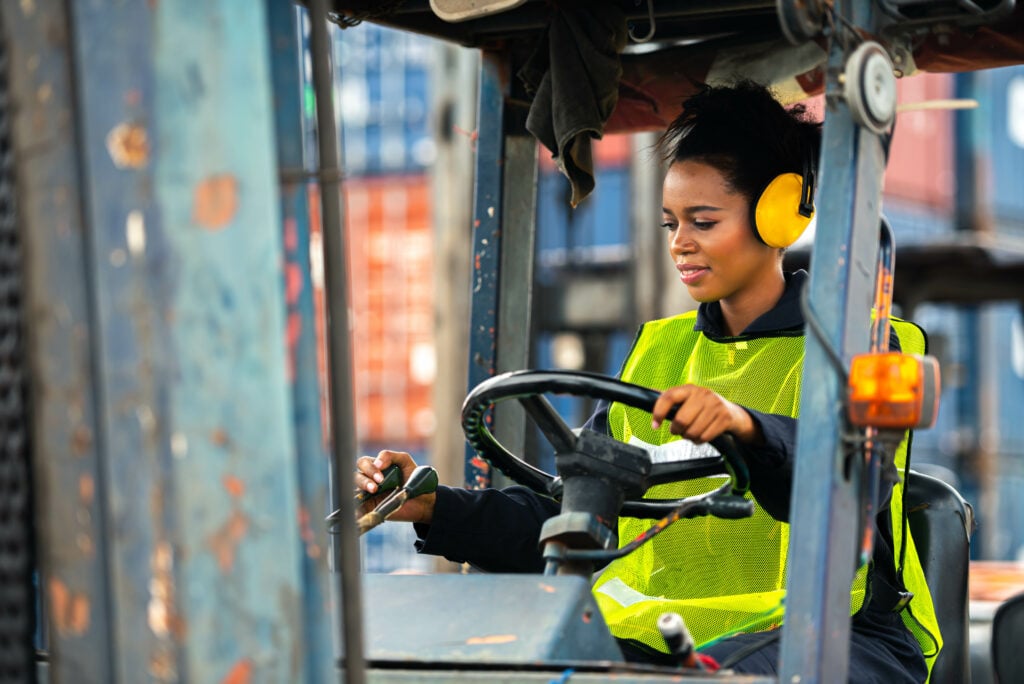Forklifts are tough, but training makes them legendary. Want fewer accidents and smoother moves? Safety’s your real MVP.
Why Forklift Safety Is a Non-Negotiable
Forklifts aren’t just big toys for grownups, they’re serious machines with serious power. But with great lifting comes great responsibility. That’s why OSHA keeps a close eye on these industrial beasts through the Powered Industrial Trucks Standard (29 CFR 1910.178). Skipping training isn’t just risky, it’s a liability magnet.
Tip-overs, collisions, and cargo catastrophes? All preventable when you follow the rules and teach your team to play it safe.
OSHA’s Recipe for a Certified Forklift Rockstar
Operators can’t just jump on and go. OSHA requires a three-part crash course in safety (minus the crashing, of course):
- Formal Instruction: Think classroom or online modules loaded with safety protocols.
- Practical Training: Real-life driving with the actual forklift they’ll be using.
- Performance Evaluation: Time to prove they know their stuff with an on-site test.
Refresher Time Isn’t Just a Suggestion
Even pros need a tune-up. Refresher training is a must if operators:
- Start driving like it’s a bumper car derby.
- Are involved in any kind of incident or near miss.
- Switch forklift types or work in new environments.
And just like oil changes, evaluations should happen every three years, no excuses.
One forklift does not rule them all. The right machine for the right job keeps things safe, smooth, and way more efficient.
Forklifts come in flavors. Pick the wrong one, and it’s chaos on wheels.
- Counterbalance Forklifts: These bad boys are built for heavy lifting in outdoor chaos like construction and shipyards.
- Narrow-Aisle Forklifts: The indoor ninjas of the forklift world, perfect for tight retail or warehouse spaces.
Want fewer breakdowns and more uptime? Inspect like a boss before every shift. No shortcuts allowed.
Pre-Trip Game Plan
Before you even start the engine, suit up and get your checklist out:
- Wear PPE. We’re talking hard hats, goggles, and those lovely steel-toed boots.
- Buckle up. It’s not just for cars, folks.
- Wipe your hands and shoes. Grease plus pedals equals “oops.”
Pre-Use Inspection Checklist
A forklift inspection isn’t optional. It’s how you avoid a forklift fiasco.
- Mast: Look for cracks or sad welds. Grease it like you mean it.
- Forks: No chips, no bends, no kidding.
- Hydraulics: Check for leaks. If it’s dripping, it’s quitting.
- Tires: Keep them pumped and damage-free.
- Power Source: Whether battery, propane, or diesel, check for leaks or loose connections.
Key Tip: If anything’s off, don’t wing it. Tell your supervisor and let a certified mechanic take over.
Lift it like a pro. Align, lower, tilt, and transport without turning your load into a circus act.
Before the Big Lift
Engine on? Good. Now do this:
- Test the brakes. You’ll want those later.
- Make sure lights and gauges work.
- Try out the lift and tilt. Smooth is the goal.
When Lifting and Moving Loads
Follow the golden rules:
- Line it up. Forks level, center the load.
- Lift it just enough. No need to hit the ceiling.
- Lean it back a bit. Keeps things balanced on the move.
- Keep it low while driving. Low center of gravity means fewer “uh-oh” moments.
Stacking and Unstacking
How to pile it up without knocking it all down:
- Approach slowly, about a foot from the stack.
- Lift with precision. No jerky moves.
- Gently place and back out like a smooth operator.
Slippery floors, low ceilings, and human traffic? It’s not a video game, it’s your shift. Play smart.
Slippery Surfaces
- Slow your roll. No drifting allowed.
- Turn wide, brake soft, and channel your inner grandma.
Overhead Hazards
- Know your height. Door frames don’t move, but you can.
Heavy Traffic Areas
- Pedestrians always win. Yield like a pro.
- Blast that horn before blind corners like you’re announcing royalty.
Loading Docks and Ramps
- Secure the dock plates. Wobbly platforms are a disaster waiting to happen.
- Drive forward uphill, reverse downhill. Trust us, gravity’s not your friend.
In Case of Emergency
- If your forklift overheats or throws a tantrum, shut it down and tag it out.
- Call in the pros. Don’t DIY the repairs unless “forklift mechanic” is on your resume.
Ready to level up your forklift game? Don’t wait for an accident to teach the lesson, train smarter today.
Forklift safety is serious business, but it doesn’t have to be boring. The best way to prevent injuries, boost confidence, and stay OSHA-compliant is simple, keep training. Whether you’re new to the forks or just due for a check-in, make safety part of your work culture.
And while you’re at it, check out the Forklift Safety: Dynamics and Balance Training Course. It dives deep into the physics of forklift operation, showing operators how to stay balanced, avoid tip-overs, and keep control like a seasoned pro.
Want to round out your training toolkit? Learn the basics and beyond with our Forklift Safety Training Course. Because smart teams train often and drive safer.
References



